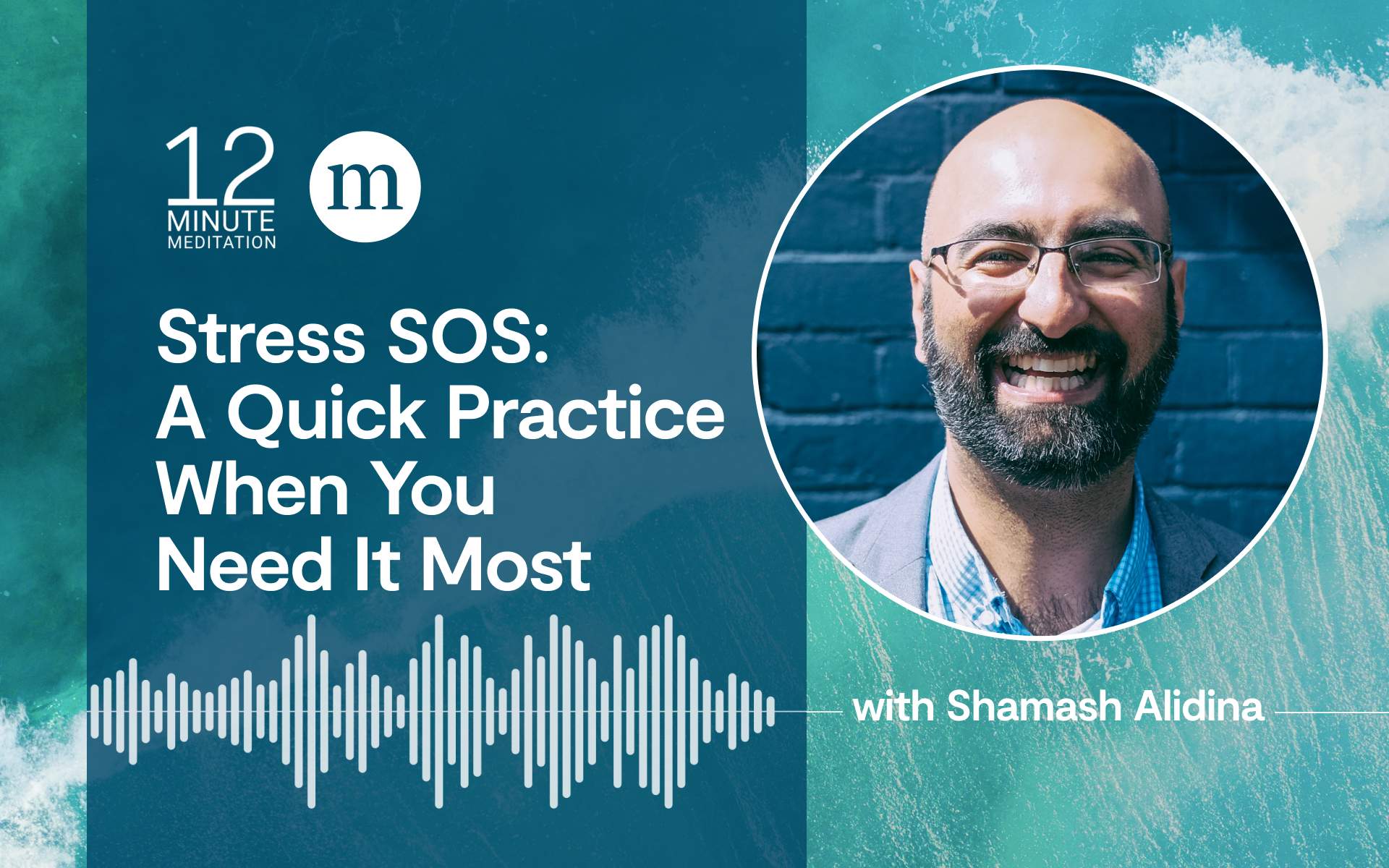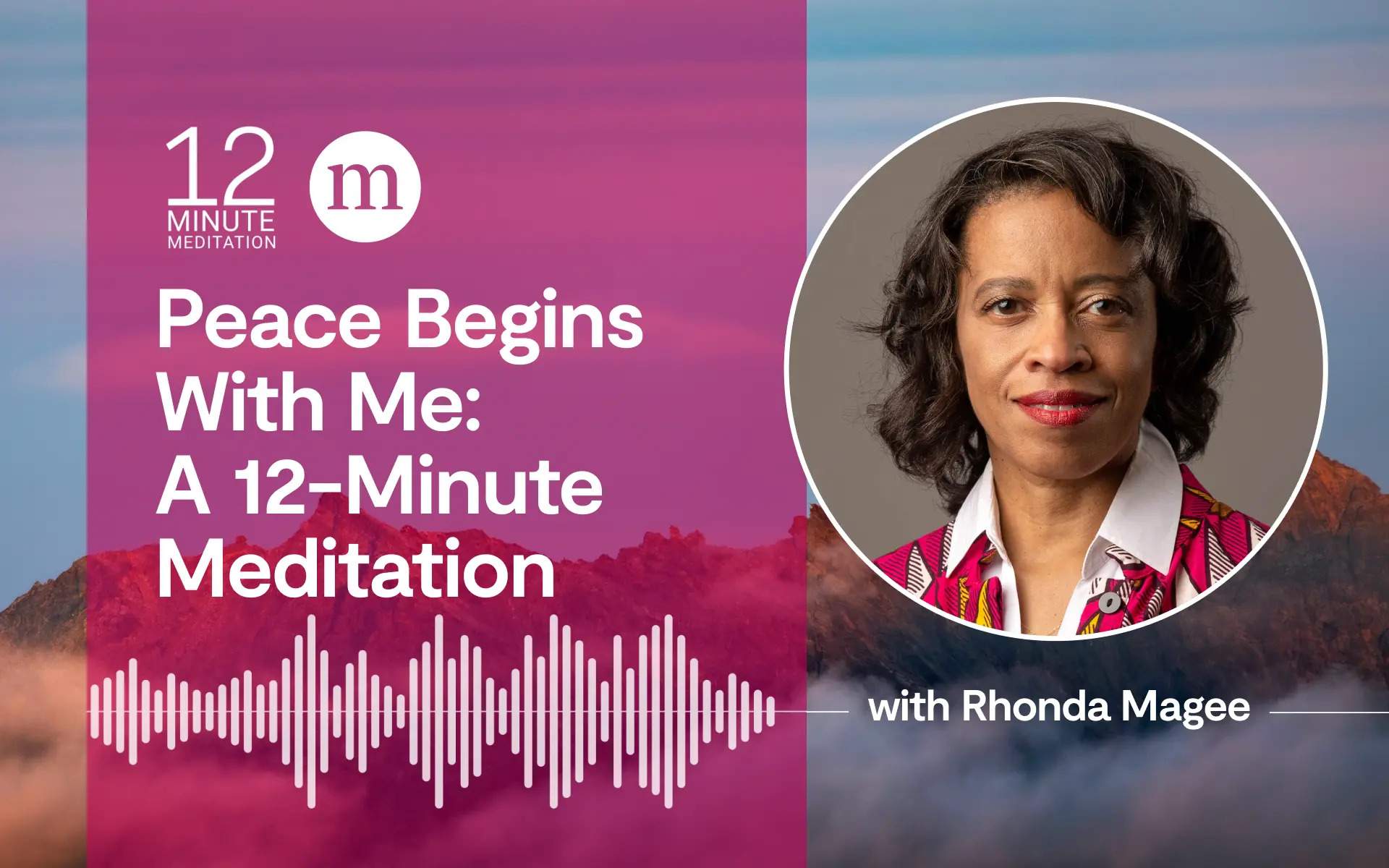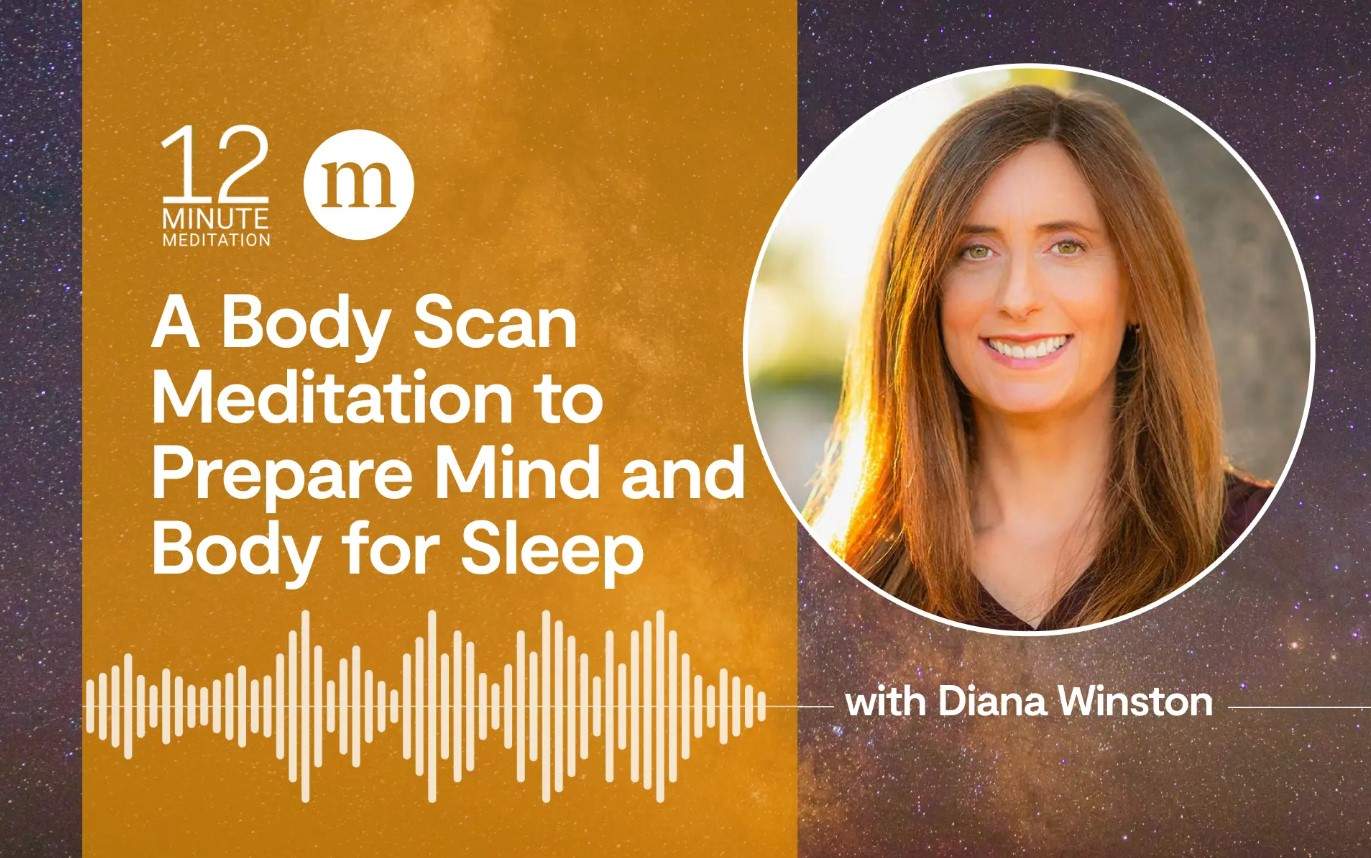We have all tasted the “boundarylessness” of awareness on those occasions when we were able to suspend our own point of view momentarily and see from another person’s point of view and feel with him or her. We call this feeling empathy.
If we are too self-absorbed and caught up in our own experience in any moment, we will be unable to shift our perspective in this way and won’t even think to try. When we are self-preoccupied, there is virtually no awareness of whole domains of reality we may be living, immersed in every day but which nevertheless are continually impinging on and influencing our lives. Our emotions, and particularly the intensely afflictive emotions that “sweep us away,” such as anger, fear, and sadness, can all too easily blind us to the full picture of what is actually happening with others and within ourselves.
A Guided Meditation for Resting In Awareness
A Guided Meditation for Resting In Awareness
Through our practice of mindfulness, we have been cultivating an awareness that can become more and more stable and vivid, especially the more we practice with wise effort and intentionality. And this awareness can be either narrow or broad, depending on the circumstances it can recognize and embrace any and all sensations within the body, including the breath sensations. It can recognize and embrace seeing, hearing, smelling, tasting and touching, as well as those activities of mind we call thinking and feeling, and it can rest in a non-conceptual direct knowing of any or all of these aspects of human experience, beyond thinking, without separation or identification.
Or if on occasion we fall into identification and separation into a subject—a me—and the objects I am observing, either inwardly or outwardly, then awareness is capable of recognizing that as well and re-establishing the knowing itself, beyond any separation, beyond any identification, beyond the personal pronouns, beyond I, me, or mine, beyond thinking altogether. So the final expansion, if you will, within this framework is to abandon the framework. In the sense that we no longer choose a focus for awareness, but allow the field of awareness to be boundless. Since awareness actually is, and always has been boundless.
We no longer choose a focus for awareness, but allow the field of awareness to be boundless. Since awareness actually is, and always has been boundless.
But as we know from our own efforts, in minds that have not encountered training and mindfulness, awareness does tend to contract and nucleate around particular arisings, especially events that have emotional charge for us. And then it tends to fixate and either be very narrow, or very self interested and self centered. Or on the other hand, to fall into utter rebellion. In other words, no awareness at all, merely obsession or dullness.
So in this moment, resting in awareness, perhaps at first allowing the field of awareness to feature the soundscape, which is as we have experienced over and over again, always here, presenting itself to our ears comprising everything that presents itself in the form of sound and the spaces between sounds. Everything, without exception. So resting in hearing, being the hearing, without necessarily creating any distance between a you and what is being heard. But simply hearing. Being the hearing. Being the hearing right now, in this moment.
And of course if there are thoughts that make their way in, letting them be known because awareness can include the knowing of thought. And expanding the field of awareness whenever you care to, to include the air caressing the skin, the air that is the breath, the air that carries sound, and resting in the knowing of the air and the breath again through the sensations in the body, since it is only through the senses, including mind, that we can know anything. And we can naturally allow a field of awareness to include of course, not just the sensations associated with breathing or the touch of the air on the skin, but any sensations and all sensations in the body right here as we sit.
And so in this moment, with the field of awareness expanded this far, we have sounds and the spaces between sounds, we have the breath and we have the air, and we have sensations in the body. That’s a lot, and it is all happening in this one moment. And it’s not separate, although we can isolate any feature of it. So just allowing it all to be present without separation in this moment, and to rest in awareness of the experiencing of it, of it all. Sitting, breathing, feeling, hearing, knowing and why exclude thinking, since it’s going on anyway. So allowing the field of awareness to expand even further to include thought, the thought stream, the bubbles of thought. And any emotional currents, eddies or whirlpools that may arise in the mind or in the heart, accompanied or unaccompanied by images and thoughts, memories or fantasies. And just allowing ourselves to rest in this awareness, this bigger basket that holds it all.
And now in one last jump, let’s allow the field of awareness to expand infinitely to allow the mind, heart to be boundless, hugely spacious, as big as the sky or space itself, with no beginning and no end, no boundary, no circumference, no periphery. No center. And rather than focusing on anything in particular, just allowing the quality of our awareness to be choiceless. To rest in the non-conceptual knowing quality of mind itself. Not seeking out anything, not pursuing anything, not rejecting anything and not featuring anything, but like an electromagnetic field so to speak, that would instantly know any perturbation any movement whatsoever that would arise within it.
So the field of awareness, like a mirror but in many more dimensions knows, detects, feels sees and senses whatever moves, whatever arises, whatever it lingers, whatever dissolves. So resting in awareness itself, in the choiceless, boundless, vast, spacious quality of awareness itself. If sound predominates in some moment, then sound is known. If the thought follows on the sound, then the thought is known as thinking now. Conceptually it’s recognized, known, felt neither pushed away nor pursued, neither condemned nor extolled.
If in the next moment the sensation arises in your lower back or in your knee and predominates in the field of awareness for a moment, that is also felt, seen, known and neither pushed away nor pursued, condemned nor extolled. Awareness functions an open, empty, spacious mirror, empty and full, able to contain anything and needing nothing to complete itself. Undisturbed, imperturbable, never not here. Like the sun always shining even when clouds obscure it. And even if we become irritated or vexed, this boundless and accepting field of awareness embraces irritation and vexation, grief, joy. Anything and everything: pain, discomfort, agitation, boredom, depression, sadness.
Awareness functions as an open, spacious mirror, empty and full, able to contain anything and needing nothing to complete itself.
There is no mind-state and no body-state that can’t be held seen, felt, known, in this infinite, boundless spaciousness. This knowing quality of the heart, mind resting in its natural luminosity and radiance with nowhere to go, nothing to do, nothing to attain, no choices to make. And no one to make them sometimes.
This is known in the Chinese tradition as silent illumination, with the method of no method. Nothing missing, nothing extra, resting in this choiceless awareness that the Tibetans sometimes call non-meditation, when all the scaffolding falls away. They don’t call it meditation anymore, they call it non-meditation but it’s got a few adjectives that make it more precise. And demonstrate how challenging it is they refer to it as undistracted and fabricated non meditation just this moment, seen and known as it is by this boundless spaciousness. This all inclusive knowing that is truly what distinguishes us as human so is best you can. With effortless effort, resting in choiceless awareness.
If thoughts arise, they are met with mindfulness, seen and known in their arising like bubbles coming off the bottom of a pot. They just burst on their own. The Tibetans refer to this as self liberation the thoughts self liberate nice way to put it you don’t have to do anything just resting in awareness just attending with sounds sensations impulses perception’s thoughts emotions all coming and going in this fast benign kind compassionate, accepting and inclusive spaciousness, with no center, no periphery, no agenda, no preferences, no watcher, no words at all. Just this.
Of course if you get lost in the just this and that can happen very very easily. That may be featuring some object or other letting the field of awareness narrowed down reestablishing the stability of mind and then allowing it to expand out again to whatever degree you like either stepwise in the way that we’ve just done or jumping straight to choiceless awareness, because the awareness is never not here, it’s always available. And we’re beyond time, space, liking and disliking, meditating and not meditating. Just the wake of vast open field of heart-full awareness, resting here, nothing happening, nothing special. Simply life expressing itself and knowing it, and in the remaining few moments of this sitting if you care to coming back to the breath, letting go of the vast spaciousness for a moment and featuring the breath once again or the breath in the body, the body as a whole sitting here breathing, or anything else that you care to feature. Or if you care to simply continue dwelling in choiceless awareness, then of course. And in the spirit of this practice, it’s your choiceless choice.
Resting here until the sound of the bells signals the end of this period of formal practice, and keeping in mind that this pristine open spaciousness of heart and mind is available to you in any and every moment of your life, unfolding now first separate from you and inhabitable. As you cultivate ongoing awareness in your daily life through the practice of mindfulness. And as you commit yourself, if you care to, if it makes sense to, using the regular discipline of formal mindfulness practice, a commitment that is tantamount to giving yourself over and over again to the adventure of a lifetime, to the cultivation of wakefulness. For the sake of being free from the anguish, of unnecessary suffering from afflictive emotions. From ignoring what is most fundamental to life and for the sake of embracing with loving kindness and compassion and wisdom. All beings including, yourself who are living and breathing, and sometimes suffering in this mysterious and awe inspiring world we find ourselves in.
The above is adapted from Jon Kabat-Zinn’s Guided Mindfulness Meditation Series 3, available here. These guided meditations are designed to accompany Jon Kabat-Zinn’s book Meditation is Not What You Think and the other three volumes based on Coming to Our Senses.
More from Jon Kabat-Zinn
Everyday Mindfulness with Jon Kabat-Zinn
When he started MBSR, Jon Kabat-Zinn didn’t have a detailed plan—just passion and an inkling that lots of good would come of it. He recently spoke with Mindful about his new MasterClass and shared insights on mindfulness and meditation. Read More
A Guided Walking Meditation to Savor the Day
This short walking meditation from Jon Kabat-Zinn encourages you to embracing mindful awareness with every footfall. Read More
An Inquiring Practice to Notice the Body
This 20-minute guided meditation from Jon Kabat-Zinn explores embracing sensations as they arise in the body in order to ground ourselves in the here and now. Read More
The Breathscape Practice for Cultivating Mindfulness
A 20-minute meditation from Jon Kabat-Zinn to allow you to tap into your capacity to be in touch with your experience, and be awake and aware with no agenda other than to be awake and aware. Read More












